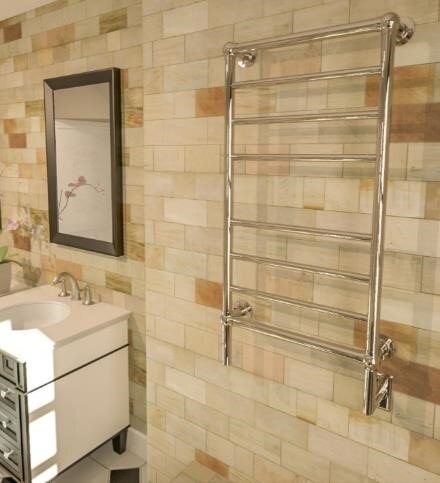4 Tips for Designing Bathrooms that Age-in-Place Gracefully
More than 75 percent of professional remodelers are involved in projects designed to enable homeowners to age in place, according to NAHB’s Remodeling Market Index (RMI) survey for the fourth quarter 2018. Leading the aging-in-place remodeling projects are bathroom projects, with grab bars, higher toilets and curbless showers at the top of the list.
While consumers are looking to remodel their baths to be more functional, they also want those spaces to be attractive, even luxurious. In fact, features such as multiple showerheads, steam showers, self-cleaning toilets, “disappearing” linear drains and smart technology are increasingly in demand.
Following are four tips for creating practical – and beautiful – bathrooms that make it easier to age in place.
Go Curbless.
Zero threshold showers continue to gain traction. In fact, many consumers are choosing to build spa-like showers that serve as a relaxing retreat. Large, open plan showers allow for significant flexibility of movement and – since there is no curb to step over – this bathroom layout is ideal for people with disabilities or mobility challenges.
Incorporating elements such as a linear drain provides a sleek, contemporary look that is appealing to many homeowners. In addition, because linear drains can be located in a variety of places within the shower, they are more versatile than center drains, and also easier to maintain and clean. Linear drains come in a range of styles and finishes, including stainless steel designs and tile inserts that can be installed seamlessly in the shower floor. This drain type is ideally-suited for shower areas with large format floor tiles, which is a growing trend.
Other considerations when designing a shower for aging in place include installing several showerheads, adding a shower bench to eliminate the need to stand, and incorporating strategically placed grab bars to aid in entering and exiting the shower area.
image © Luxe Linear Drains
Let it Sink in.
Another area to address when designing a bathroom for aging in place is the vanity and sink area. An existing vanity can often be modified, or a custom-made vanity that is more accessible can be installed. Lowering sink heights to accommodate a wheelchair is not a dramatic change, but can make navigating the bathroom space less challenging.
One of the easiest ways to implement aging-in-place bathroom design is to install lever handle faucets, which are easier to turn on and off than traditional lift or twist faucets. Pedal-controlled faucets, which allow the homeowner to turn the water on and off using foot levers, is another option to consider.
And, it’s important not to overlook cabinet design. Replacing mirrored medicine cabinets with versions with glass-front doors, or adding open shelving, can make it easier to see and access frequently used bathroom items.
image © Luxe Linear Drains
Light the Way.
In addition to overhead lighting in the bathroom, it’s important to include other types of lighting, especially since it may be challenging for some homeowners to replace lightbulbs as they get older. Adding sensor lights that automatically come on when a person enters the bathroom and turn off when they exit not only saves energy but also provides an added layer of safety.
Vanity lights that are set lower – for example, on the sides of the mirror instead of on top of it – are also a good option. Lights can even be added under shelves and around the toilet to serve as a night light. Adequate lighting in the shower area will also help to avoid falls.
image © Luxe Linear Drains
Accessorize.
While a bathroom designed for aging in place needs to be practical and functional, that doesn’t have to mean a sacrifice in style. Think about including elements such as heated towel racks, which can transform a regular bathroom into a spa-like space. Available in a variety of styles and finishes, a heated towel rack provides convenient access to fresh, warm towels, reducing the need to replace them as frequently.
In addition, colored or metallic grouts can be used in place of traditional white or beige grout when installing tile on backsplashes or in shower surrounds, adding depth and visual interest. Tiles can be found in a diverse range of sizes and shapes and in materials ranging from ceramic and porcelain designs to glass and terrazzo styles.
image © Luxe Linear Drains
When it comes to aging in place, making a few simple adjustments in an existing bathroom can result in a big impact on comfort and safety – while, at the same time, creating a space that is welcoming and can be enjoyed for years to come.
This article was originally published on Luxe Linear Drains’ blog and has been republished here with permission.
cover image © unsplash










